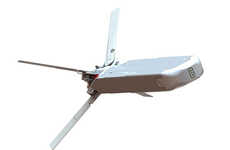
This System Helps Protect Civilians from Violent Conflict
Katherine Pendrill — August 13, 2015 — Tech
References: dlshad.net & theatlantic
Dishad Othman recently designed an advanced missile warning system that helps to protect Syrian citizens from the aftermath of violent conflict. The new system is part of the growing 'Peacetech' field which seeks to use technology, data and media tools to reduce the impact of violent conflict and extremism. While Peacetech devices cannot end warfare, they can help protect civilians from the impact of conflict.
Othman's system is called 'Aymta' and relies on reports from local activists, as well as calculated missile trajectories and arrival times. Based on this data, the system will send a mobile alert to any registered civilian who falls within the strike zone. The system gives people about 10 minutes of warning, which is enough time for them to get out of the streets or into a secure bomb shelter.
While the new missile warning system may not address the root cause of conflict, it could help save countless civilian lives.
Othman's system is called 'Aymta' and relies on reports from local activists, as well as calculated missile trajectories and arrival times. Based on this data, the system will send a mobile alert to any registered civilian who falls within the strike zone. The system gives people about 10 minutes of warning, which is enough time for them to get out of the streets or into a secure bomb shelter.
While the new missile warning system may not address the root cause of conflict, it could help save countless civilian lives.
Trend Themes
1. Peacetech Field - Developing technology, data, and media tools to reduce the impact of violent conflict and extremism.
2. Advanced Warning Systems - Designing systems to alert civilians before the impact of conflict and reduce loss of life.
3. Mobile Alerts - Sending alerts to registered civilians' mobile devices to warn them of potential strikes and enable prompt action.
Industry Implications
1. Military - Adding advanced warning systems to their vehicles to reduce loss of life in high-risk areas.
2. Emergency Response - Using similar systems to alert people of approaching natural disasters and give them time to evacuate or take cover.
3. Smart Cities - Implementing warning systems in high-risk areas of cities to protect civilians from conflict or other threats.
2.4
Score
Popularity
Activity
Freshness























